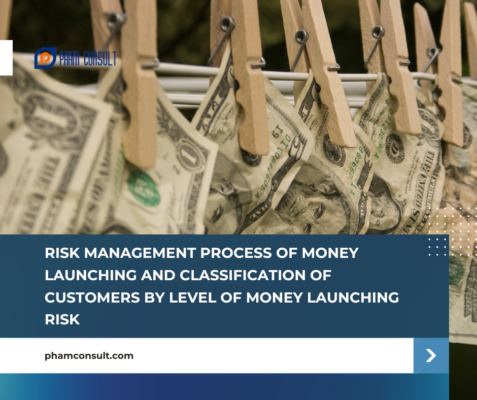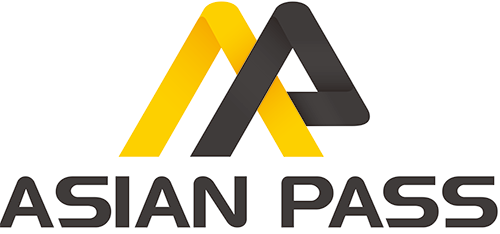On July 28, 2023, the State Bank of Vietnam issued Circular 09/2023/TT-NHNN guiding the implementation of the Law on prevention and combat of money laundering. Let’s find out more about this issue with Pham Consult!

Accordingly, the current process of money laundering risk management and customer classification according to the level of risk of money laundering is specified in Article 4 of Circular 09/2023/TT-NHNN as follows:
(1) Based on the results of assessment and update of money laundering risks in Article 3 of Circular 09/2023/TT-NHNN, the reporting subject develops and promulgates a money laundering risk management process at report icon. The money laundering risk management process must be presented in a step-by-step manner appropriate to the size, scope and characteristics of the reporting subject to manage money laundering risks. The money laundering risk management process includes at a minimum the following:
1.1. Determining the scope and objectives of money laundering risk management activities;
1.2. Identify and evaluate the impact of money laundering risks at the reporting object;
1.3. Classification of customers according to low, medium and high risk of money laundering based on the following factors: customers; products or services customers are using or intend to use; geographical location where the client resides or has its head office and other factors determined and classified by the reporting subject in accordance with the arising reality and specified in the risk management process;
1.4. Process to identify and assess money laundering risks before providing new products or services; existing products and services applying innovative technology;
1.5. Risk management process to perform, refuse, suspend, post-transaction control or review, report suspicious transactions, electronic money transfers, inaccurate, incomplete information required bridge;
1.6. Measures are applied corresponding to the level of customer’s money laundering risk, including the frequency of updates, verification of customer identification information, the level of monitoring of the customer’s transactions according to the level of risk. on money laundering, mitigation measures and enhanced measures in sections (2) and (5).
(2) For customers with low risk of money laundering, after first establishing a relationship with the customer, when applying customer identification measures according to the Law on Anti-Money Laundering 2022 and Decree 19 2023/ND-CP, the reporting subject is selected to apply one or all of the following mitigation measures to identify customers:
2.1. Do not collect information about the purpose and nature of the business relationship if, through the types of transactions or established business relationships, the purpose and nature of the business relationship can be determined;
2.2. Reduce the frequency of updating customer identification information compared to customers with an average level of money laundering risk;
2.3. Reduced level of monitoring of client transactions compared to clients with a medium level of risk of money laundering.
(3) The reporting subject is not allowed to apply mitigation measures to identify clients in case of suspected money laundering.
(4) For customers with medium risk of money laundering, the reporting subject must apply measures to identify the customer in accordance with the provisions of the Law on Anti-Money Laundering 2022 and the Government’s Decree No. detailing a number of articles of the Law on Anti-Money Laundering.
(5) For customers with a high level of risk of money laundering, in addition to applying customer identification measures according to the Law on Anti-Money Laundering 2022 and Decree 19/2023/ND-CP, the subject of reporting The report must apply enhanced measures, including:
5.1. Have management approval at least one level higher than that applicable to clients with an average money laundering risk to establish or continue to maintain a business relationship with high-risk grass customers;
5.2. Collect, update, verify additional information of individual customers to serve the assessment and management of customer risk, including the following minimum information: Average monthly income of customers goods in at least 06 most recent months before the time of assessment; contact information of the agency, organization or owner of the place where the customer works or has the main income (if any); information related to the source of money or the source of assets in the customer’s transaction;
5.3. Collect, update and verify additional information of institutional customers to serve the assessment and management of customer risk, including the following minimum information: industry, production, business, main revenue generating services; total revenue in the last 2 years before the time of assessment; information related to the source of money or the source of assets in the customer’s transaction;
5.4. Collect, update, verify additional information (if any) for customer risk assessment and management;
5.5. Enhanced monitoring of customer transactions made through reporting objects, business relationships through the application of control measures and sample selection of transactions to check and secure customer transactions consistent with the purpose and nature of the client’s business relationship with the reporting object and the client’s business activities; promptly detect suspicious signs and review suspicious transaction reports;
5.6. Increase the frequency of updating customer identification information compared to customers with a medium level of money laundering risk.
Circular 09/2023/TT-NHNN takes effect from July 28, 2023.
Thus, through the above article, we have been clearer about the money laundering risk management process and classifying customers according to the level of risk of money laundering. Pham Consult hopes this information will be useful to you.




 VI
VI